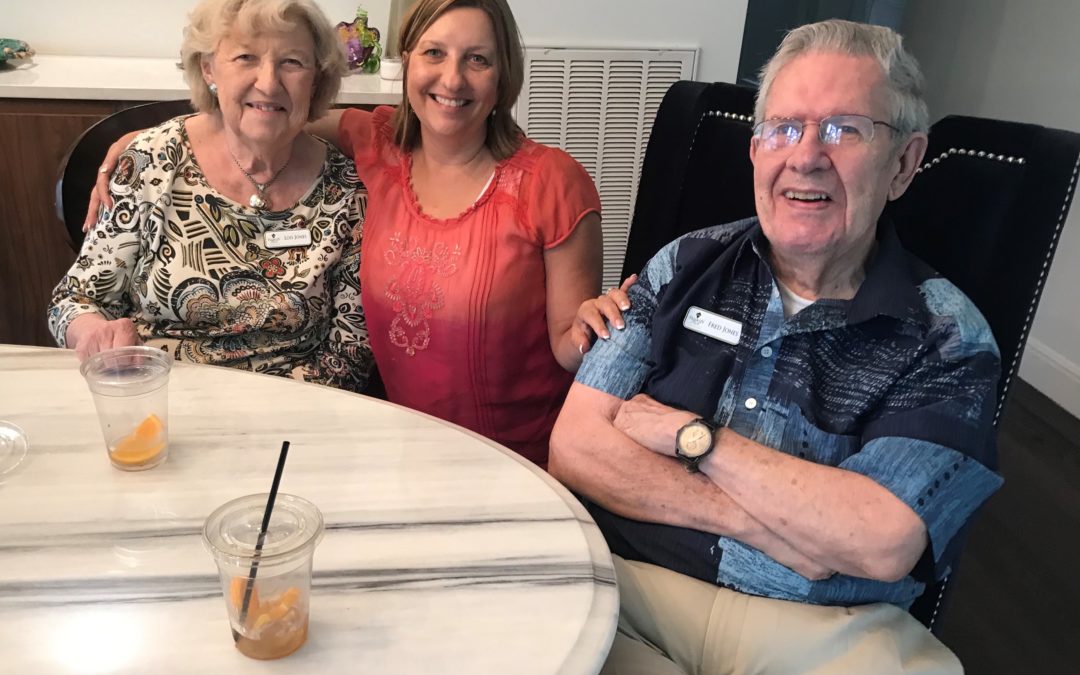I’m observing — and living — a developing trend: that of families merging. The reasons include an aging population too healthy for a nursing home, a sluggish economy and high unemployment rate, and the prevalence of divorce, remarriage and “blended” families.
I will use three columns to address these issues: first, bringing elderly parents into your home; second, adult children (perhaps with children of their own) coming home; third, the blended family.
Our home is a four-generation setting. After her job ended, our oldest daughter and her daughter moved in with us a year ago in November, giving Beverly time to explore her employment options and perhaps further education. We could help them more efficiently here than we could in their own place. We had already planned for my parents to move in with us, and in July of 2002 began building a home in north San Antonio that would be large enough to house us all. In October of last year my parents, who are in their 90s, came to live with us.
I became an official member of the sandwich generation.
This was not an easy transition. Al, my stepfather, had lived in his home in Muskogee, Oklahoma, for 65 years. Mother lived with him there for 40 years. Many memories were in the house. Al is legally blind and felt secure there. He was very concerned about moving to this large new home we had built. Would he be able to get around? Once here, his mobility hasn’t been a problem.
Mother and Al have the master bedroom and have brought furniture and many of their lifelong treasures into this room, which is large enough for a sitting area in one end. Stepping through the door is like going back in time to the ‘;40s or ‘;50s. The turn-of-the-(20th)-century grandfather clock chimes on the hour, quarter hour, half and three-quarter hour. The 1916 bedroom suite is in one end with a cedar chest at the foot of the bed. Two overstuffed chairs flank a glass-topped coffee table filled with treasures beside a wall of windows which look out onto trees and our deck.
Their antique furniture fills spaces in the common areas of our house as well. We have their dining room suite (hand built in 1939 by prisoners in the Oklahoma Prison System), their china cabinet (1910) with the rounded glass and their china and glassware. When elderly people move from their homes, it helps for them to bring as much of their “stuff” as possible. Thankfully, we have space for most of their furniture and treasures, and we love antiques.
Mother and Al both lost significant weight the last six months they were in their home — at least partly because of the difficulty involved in preparing meals. Wonderful friends and neighbors brought in food regularly for them, and they still had to warm it and clean up. The main reason for the loss of weight, though, was probably depression. They felt as though they were losing everything. Al’s blindness and Mother’;s frailty, severe osteoporosis and arthritis interfered with their taking care of things. He could still do the cleaning, but couldn’t see the dirt. She could see the dirt but couldn’t really do any cleaning. A cooperative effort allowed them to keep their home reasonably habitable, but many things went undone. They would definitely have preferred to live out their years in that home but realized it was nearing impossibility. Mother took three falls in a two-week period (thankfully without breaking any bones). That signaled the time had come for a move.
One of the major problems in living together is the difference in temperature preferences. Mother and Al both want much warmer air than we do. Bob and I don’t do well if it’s too warm. Fortunately, we are able to shut off the air conditioner to Mother and Al’s room (with a damper change in the attic) and by closing their vent. They have a small heater in their room, which they run most of the time to keep the temperature at around 76º. We have gradually raised the temperature a couple of degrees in the main part of the house and use ceiling fans for our comfort. When they are out in the house, we usually turn the fans off. The draft is uncomfortable for them. This arrangement seems to be working well enough.
Another problem is mealtime. Mother and Al would prefer to have their main meal at noon and eat very little in the evening. We eat a lighter meal at noon, and have our main meal at night. We haven’t solved this issue yet. On the days I work, we have the main meal at night. On my days off, we eat our main meal earlier.
When they first arrived, we made every effort to do everything for them. We learned this isn’t good for them or us. They basically fix their own breakfast and lunch now most of the time. Al rinses all of the dishes to prepare them for the dishwasher. (At his home, he eschewed the dishwasher and insisted on washing them by hand, by himself most of the time.) They change their own bed and do their own laundry. They make their bed every morning. We have someone who comes in once a week to do the major cleaning in all parts of the house. We have quit jumping up whenever they start to do something.
We have three dogs in our household. Phineas, a senior citizen Shih Tsu, once had many tricks and now has retired. He does nothing but eat, sleep and (thankfully) make his trips outside. Valley belongs to Bev and is a well trained Golden Retriever mix. Then there’s Sasha, our incorrigible 2-year-old brindle Shih Tsu. We got her, expecting her to be calm and imminently trainable, as Phineas was. She isn’t. Remembering Al’s beloved, well-behaved dog Skipper, I asked him to take over on Sasha’s training. I call him the “dog whisperer” because of his soft, patient and persistent technique. She can actually “sit” and “wait” now. He’s ready to start her on a new trick — perhaps rolling over. She’s socializing, and his depression is lifting.
The greatest issue in any merger is communication. Al is a stoic. He’s not much of one for complaining. Mother is good about sticking with something, in her gentle way, until one of us gets the message and makes the change, if possible. She interprets for Al. We advocate for saying what you want and model it. With that we can solve most problems. We’re getting there.
Rosemary J. Stauber, Ph.D., is a clinical psychologist in San Antonio and founding director of the Bexar County Women’s Center.
Author: Rosemary J. Stauber









0 Comments